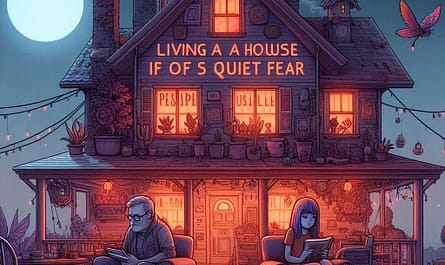— But Now I Identify as ADHD, and It’s Changed Everything “
Understanding both ADHD and autism has helped me work with my brain, not against it.

The Diagnosis I Didn’t Know I Had
I was diagnosed with ADHD not once, but twice — and for most of my life, I only knew about one of those diagnoses.
The first happened when I was 11, though I wouldn’t find out about it until two decades later, at age 31. It came up during a casual conversation with my mom after I was re-evaluated as an adult.
Looking back, it all makes sense.
I wasn’t the stereotypical hyperactive boy bouncing off the walls, so my ADHD wasn’t obvious. I was quiet, dreamy, always lost in thought — but there were signs. Signs that went deeper than ADHD.
Growing Up “Too Sensitive” and “Too Much”My childhood is filled with memories of feeling overwhelmed by things that didn’t seem to bother other kids. I fell down a flight of stairs and became terrified of them for days. Loud noises and bright lights made me freeze or melt down. I often misread social cues and assumed my classmates hated me when they were just confused by my awkwardness.
In school, I struggled to focus — unless the subject fascinated me. Then I’d hyperfocus and ace the test. Teachers were baffled. I seemed disconnected but still had all the answers.
At home, I was both “too much” and “not enough.” I threw tantrums, smashed toys, and then disappeared into books or video games for hours, unreachable. My mom used to tell me to throw the “bad me” out the car window — and I’d mime doing it, wishing I could remove the parts of me that felt so hard to manage.
Rediscovering My ADHD — and the Missing Puzzle Piece
In my early 30s, life was spiraling. I missed deadlines, forgot appointments, and felt constantly drained. I sought help and was officially diagnosed with ADHD — again.
When I told my mom, she said, “Oh, you were diagnosed when you were 11. We just didn’t want to medicate you.”
I was stunned. Twenty years of feeling broken — and the truth had been there all along. Still, something felt incomplete.
Discovering AuDHD
While reading about ADHD, I stumbled across the term AuDHD — the overlap of autism and ADHD. I saw stories that mirrored mine: people who lived in their heads, felt out of sync with the world, and masked constantly.
Could that be me?
I had never considered autism before. I thought autism looked different. But reading about masking, sensory overwhelm, and emotional burnout felt like reading my autobiography.
So I took the RAADS-R, a screener often used for late-diagnosed or AFAB adults. My score was well above the threshold for autism.
That was my lightbulb moment.
Why Understanding My AuDHD Brain Changed Everything
Suddenly, I had the missing manual to my mind. I could see how my ADHD and autism weren’t two separate things — they were interacting constantly:
- My ADHD craved stimulation and novelty.
- My autism craved control and predictability.
Every internal tug-of-war started to make sense.
Now, I ask myself better questions:
“Am I overstimulated or under-stimulated?”
“Is this executive dysfunction or sensory overload?”
I’ve stopped trying to force myself to fit neurotypical molds. Instead, I’ve built support systems that work for me — honoring both my need for spontaneity and structure.
Self-Acceptance, Finally
Identifying as AuDHD gave me permission to stop hiding, stop apologizing, and start healing. I no longer see my intensity or my sensitivity as flaws. They’re part of who I am — and they deserve compassion.
I’m still learning. Still unmasking. But now, I’m doing it from a place of understanding, not shame.
And that changes everything.



